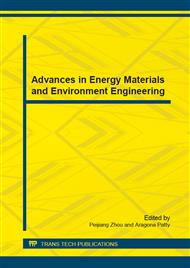p.511
p.515
p.519
p.525
p.530
p.534
p.538
p.542
p.549
The Study of Reclaimed Water and Rainwater Utilization Mode of Rural Rainwater Utilization
Abstract:
Rainwater utilization is always paid attention by the government and research institutes in Beijing, as its lack of water resources. Lots of rainwater utilization projects were built in the urban and rural areas. More than 80 rainwater utilization projects were completed in Fangshan District, which located in the suburbs. They effectively saving water resources and improving the rural water environment. Combined with the characteristics of rainwater resources in Beijing, a new rainwater utilization mode about sewage purification and reclaimed water reuse appeared during the construction process, providing reference for promote rainwater utilization projects in Fangshan District.
Info:
Periodical:
Pages:
530-533
Citation:
Online since:
December 2014
Authors:
Price:
Сopyright:
© 2015 Trans Tech Publications Ltd. All Rights Reserved
Share:
Citation:


